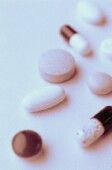
WEDNESDAY, Oct. 17 (HealthDay News) — The rate of prescription painkiller abuse among American youth is 40 percent higher than in previous generations, and it is now the second most common type of illegal drug use after marijuana, according to a new study.
The current generation’s abuse of prescription pain medications such as vicodin, valium and oxycontin is “higher than any generation ever measured,” study author Richard Miech, a professor of sociology at the University of Colorado, Denver, said in a university news release.
The researchers analyzed data from the National Survey on Drug Use and Health from 1985 to 2009, and found that prescription painkiller abuse led to:
- A 129 percent increase in emergency department visits between 2004 and 2009.
- A more than 500 percent increase in the number of people seeking treatment for addiction to prescription opioids between 1997 and 2007.
- A threefold increase in accidental overdose deaths between the 1990s and 2007.
There are now more deaths due to accidental overdoses of prescription painkillers than due to overdoses of cocaine and heroin combined, Miech said.
Many factors contribute to the increasing abuse of prescription painkillers by youth, including greater availability. For example, the number of hydrocodone and oxycodone products prescribed legally in the United States increased from about 40 million in 1991 to nearly 180 million in 2007, according to the study, which was published Oct. 16 in the Journal of Adolescent Health.
There are more of these drugs in people’s medicine cabinets, Miech said, and if the drugs are not kept under lock and key they are easy to steal.
“Most people recognize the dangers of leaving a loaded gun lying around the house,” Miech said. “What few people realize is that far more people die as a result of unsecured prescription medications.”
The findings suggest that current efforts to prevent prescription painkiller abuse are not effective, and “it is critical that we devise a strategy to deal with an epidemic that shows little sign of ebbing,” Miech said.
More information
The U.S. National Institute on Drug Abuse has more about prescription drug abuse.

